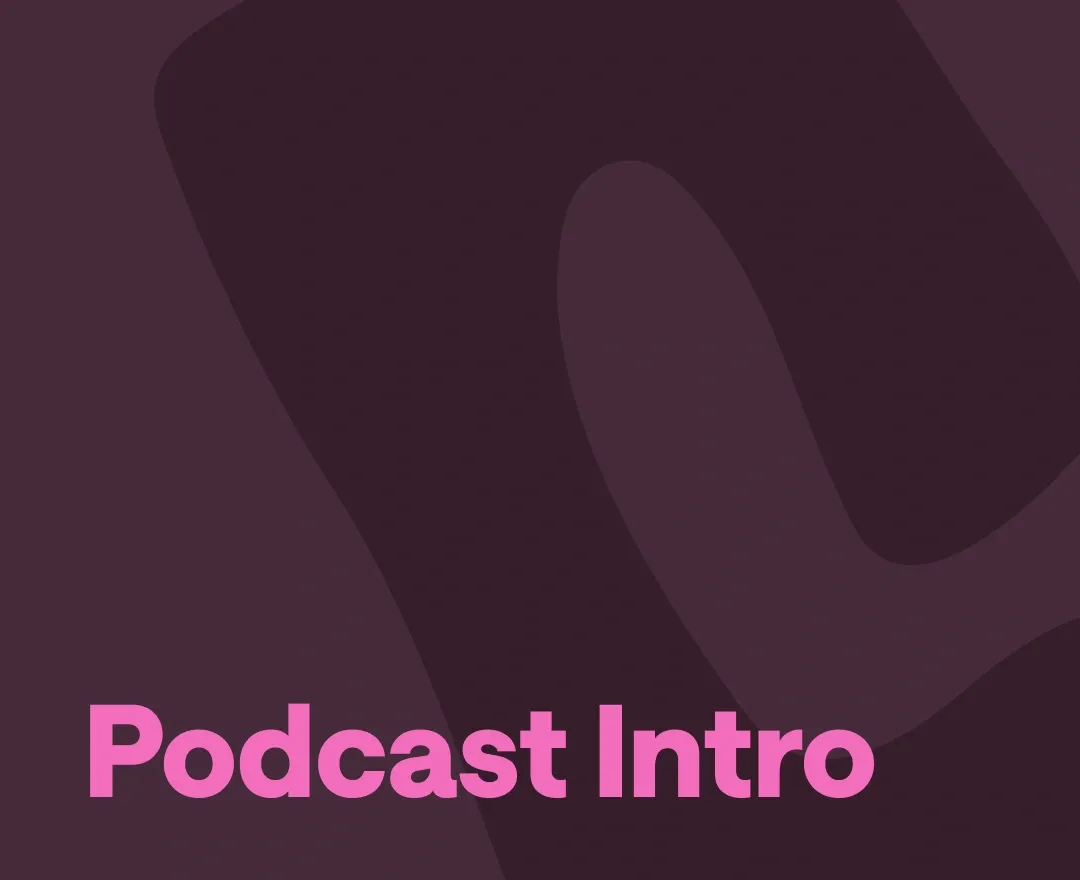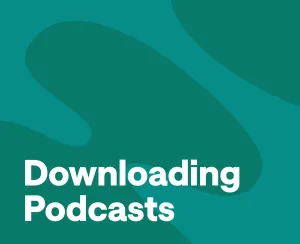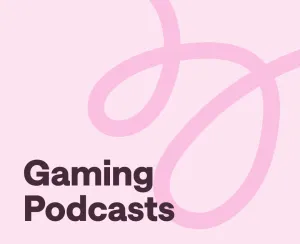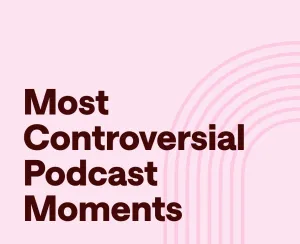How do you make your podcast pop out among the thousands of shows published daily? This is a question that every beginner podcaster should be asking themselves when launching their show.
And our answer is: by hooking your listeners immediately with a compelling podcast intro. In this blog post, we'll discuss everything you need to assemble the perfect podcast introduction that will leave your listeners hungry for more.
Why a Podcast Introduction is Important
Data from Edison research shows only 41% of new listeners listen to the entire podcast episode, compared to 71% of regular listeners.
Other studies have shown that podcasters usually lose 20-30% of their listeners in the first five minutes of their show. So what on earth is going on here?
Why would only half of the new listeners finish listening to your podcast episode?
There can be multiple reasons here, but the main one is that they probably expected something other than what your podcast had to offer. In other words, even if you had the most engaging podcast episode, it wasn't probably the topic or the style that your new listeners were looking for.
That doesn’t mean you necessarily need to change anything. If your podcast intro clearly sets up your podcast's mood, style, and topic, your listeners will know immediately if they want to stay or leave.
But what about the statistic of almost 70% of your listeners being ready to leave within five minutes of your show starting. Let's say you have a nice informative introduction that explains exactly what your episode is about. Is that enough? Well, the statistics show it isn’t. The perfect introduction should also hook your reader from the first second and leave them craving more of it.
If your podcast introduction does all of these, you'll have a good chance of retaining most of your new and current listeners in your show's first couple of minutes.
How to make a great podcast intro?
What are the components that make up an engaging podcast introduction?
1) Create a catchy hook
The process of ‘hooking’ starts way before your listeners even hit the play button. You hook your potential listeners with your artwork and description first. If you don't have an attractive podcast cover and a well-written podcast description, no matter how good your show is, people won’t know to give it a chance.
Once that is set, you can move to the second part of your hook: the actual line you say in your podcast introduction to lure in your listeners. What you use as your podcast hook largely depends on the theme and topic of your podcast itself.
Let's say you’re doing a fiction podcast, you can open up your show with an intriguing story and leave it on a cliffhanger. If you're doing more of an interview podcast, then you can start your show by introducing your important guest or playing an enticing clip from later in the interview.
Your hook can change from episode to episode. It’s good to experiment with it and try different options to try and figure out which style works best for your audience.
2) Add a pleasing music track
Sometimes all you need to stay in your listener's head is a memorable jingle! That's why so many podcast intros go alongside a catchy little tune. But remember when choosing your music track that it shouldn't just be there because you liked it.
Your music track should set up your podcast's mood and keep the same tone as the rest of your show. And just like your hook, your podcast music track doesn't have to stay the same: it can change according to your episode's theme.
When you choose your music track and add it to your podcast, remember not to make it too loud, as you don't want it to overshadow your content.
3) Introduce the host and the content
Give your listeners some context. Introduce yourself, give them your name or your nickname, and put a name to the voice that is going to accompany them for the rest of the show.
Here are some other questions you can answer during your podcast intro to make it more clear for your listeners what exactly they are listening to:
1) Who is your podcast for? Tell your listeners who your target audience is so that if your new listeners are not on the list, they don't waste their time.
2) What is your podcast about, and what's its theme?
3) Is there a problem your podcast is trying to solve? If yes, what is it?
4) What is the format of your podcast? Are you going to do an interview podcast or a solo one?
If your intro succeeds in identifying most of the factors mentioned above, then you can be sure your audience knows what to expect from your episodes.
4) Add a compelling call-to-action
Finally, the last thing in your podcast intro should be the CTA. Is there a specific action you want your podcast listeners to do? For instance, you can use this space to promote your premium episodes, encourage your listeners to subscribe to your podcast or ask them to support your show by donating to your Patreon account.
Podcast Intro Examples: Analysis on Why it Works
Example #1: JRE
Let's start by analyzing one of the most famous podcasts out there. As Spotify charts show, in 2023, the most listened-to podcast in the US is The Joe Rogan Experience. So how does the most popular US podcast host start his show?
He only has four lines in his podcast introduction:
"Joe Rogan podcast, check it out!"
"The Joe Rogan Experience" (voiced by AI)
"Train by day, Joe Rogan podcast by night!"
"All day!" Cue: drumbeat.
And these lines are accompanied by an upbeat music track that most JRE fans could sing along to. Now as you can see, Joe Rogan doesn't really check all the checkmarks we have above, but that's because he's Joe Rogan, and he doesn't have to.
In other words, if you have the most listened-to podcast on Spotify, you don't have to introduce yourself or your podcast to the listeners cause they most probably have already heard about you before coming.
But let's focus on the elements that Joe Rogan does implement in his introduction, which are: the music and the hook. In Joe Rogan's case the hook is his slogan "Train by day, Joe Rogan podcast by night." For those interested in where the line comes from, check out this article. But even without the context, you can tell that with this simple line, Joe Rogan is setting the right mood for his audience: "you're about to experience a pretty legendary show."
And although Joe Rogan is not telling you that his podcast will not be "too serious," the music track he puts in his intro to the podcast tells it for him.
Example #2: The Anatomy of Murder
Now let's move to another podcast introduction example that many of you will probably know: The Anatomy of Murder.
If you listen to the first 3 minutes of the podcast introduction, here's what you'll find:
- - The podcast intro starts with the CTA that encourages the listeners to follow the hosts' Instagram account
- After that, it moves to the theme tune of the episode
- Next comes the introduction of the host, followed by the show introduction
- Then, you get introduced to the guest
- Some details on the episode's topic are followed
- Second CTA that directs to the BTS content
This episode intro is an excellent example of how you can use all of the podcast intro elements mentioned above to smoothly build up your show and give your listeners an understanding of what's about to come in your episode.
Craft captivating intros using intuitive AI podcast tools for a polished touch.
Podcast Intro Example Script
Here's a couple of podcast intro templates that you can use to get started:
{insert a specific/episode-related hook} + {insert the theme music} +"Hi, I'm ____ and this is _____ podcast, the show that (explain the purpose of the show) "+ {fade out the music track}
If you have an episode with a guest, you can go with the following template:
{insert the theme music}+ "Hey, this is _____ from _____, and today we have our special guest ______ with us to explore (insert what your episode topic will be)" + {insert a small teaser}
How to Make a Podcast Intro with Podcastle
With Podcastle creating a podcast intro is really simple. You just need to log into your Podcastle account and choose Create> Project/Recording. If you already have recorded your introduction somewhere else, then drag and drop it to Podcastle's editor. If you still haven't started recording, you can record it straight from our platform!
Once you've recorded your intro, choose from one of our music library's hundreds of royalty-free music tracks. Add fade in/out when necessary, cut your audio clips, and enhance your podcast with a number of AI-powered features—all using Podcastle.
It only takes a couple of minutes to have a professional podcast intro produced and exported.
FAQ
What goes into a good podcast intro? A podcast intro usually includes the podcast's name, the name of the host, a brief description of the show, set up of the mood and theme, and preferably a hook.
How long should your podcast intro be?
The length of your podcast introduction depends on your show's style. Usually, we'd say keep it short; anything under a minute is fine. But sometimes, you can go over a bit if you want to include a small teaser to the episode. Whatever it is, make sure your podcast intro does not pass the five-minute threshold.
Is there a template script for the podcast intro?
Yes, and we've included a couple in our blog post! Make sure you check them out. When you pick one of them, remember that it's just a template, and you still need to customize it according to your show.
How do I record my podcast intro?
We suggest using Podcastle! It's an all-in-one tool for recording, editing, and enhancing your podcast all from one place. Its best part is that it's super easy to use and offers hundreds of royalty-free music tracks for your show.
Should my podcast also have an outro?
We say yes! Otherwise, your podcast might sound incomplete. But don't worry; it doesn't have to be anything extra. Just a quick thank you line, CTA, and a beautiful music track would do the job.









